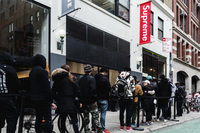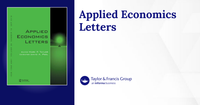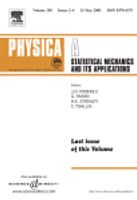Explore web search results related to this domain and discover relevant information.
Demand is an economic principle that describes consumer willingness to pay a price for a good or service.
Demand is a consumer's willingness to buy something, and demand is generally related to the price that consumer would have to pay. Generally speaking, demand increases when prices drop and decreases when prices rise.Businesses spend a lot of money to determine the demand for their products and services. Incorrect estimates can result in lost sales from willing buyers if demand is underestimated or losses from leftover inventory if demand is overestimated. Demand helps fuel profits and the economy.Understanding Elasticity vs. Inelasticity of DemandDemand is a consumer's desire to purchase goods and services and willingness to pay a specific price at a specific time.
:max_bytes(150000):strip_icc()/Demand_Final_4197913-237d38b10e334b539ee7fe1edc23558d.jpg)

This is called pricing based on demand. For example, you can slightly adjust the price if you’re selling a trending phone case with only five left. This way, the ones who want it will still buy it, and you won’t lose revenue. This pricing strategy is useful when inventory is limited and demand ...
This is called pricing based on demand. For example, you can slightly adjust the price if you’re selling a trending phone case with only five left. This way, the ones who want it will still buy it, and you won’t lose revenue. This pricing strategy is useful when inventory is limited and demand is high.Amazon Prime Day is one of the most prominent for demand-based pricing examples. During this event, prices drop on thousands of items, but only for a limited time. These offers are created around buyer demand.The drink is tied to a specific time and emotion. People feel excited when it returns and are willing to pay more. Starbucks adjusts prices based on this yearly demand spike. If your store sells seasonal items like planners, holiday decor, or limited collections, you can apply the same pricing method.In wholesale, buyers often purchase in large quantities. One way to use demand-based pricing is to create tiered pricing during busy restock seasons. For example, you can offer lower prices per unit when a buyer orders 50, 100, or 200 pieces—but only for a limited time when demand is high.

Limited supply, steady wealth creation fuel demand for luxury real estate; ₹100-crore deals are exceptions, not benchmarks, says CBRE’s Anshuman Magazine | Real Estate News
The supply of luxury real estate remains limited, especially compared to the growing number of affluent homebuyers across the country. Post-COVID wealth creation has led more people to seek larger homes with better amenities and enhanced living spaces. While these factors indicate sustained demand for luxury housing in the years ahead, it does not mean prices will continue to rise indefinitely, Anshuman Magazine, chairman and CEO for India, South-East Asia, Middle East & Africa at CBRE told HT.com“We may see prices of luxury real estate slowing down in some markets and going up in others. We may see a slowdown in demand in the interim, but overall, the demand will remain for many years, and the supply still has to catch up,” he explained. That said, the supply of luxury real estate remains limited.News/Real Estate/ Luxury Housing Demand Strong Amid Limited Supply But Prices Won’t Increase Forever, Says Anshuman MagazineSee LessDemand for luxury housing will remain strong for years but this does not mean that prices will continue to rise indefinitely, Anshuman Magazine, chairman and CEO for India, South-East Asia, Middle East & Africa at CBRE has said.
Define Limited Demand Resource. shall have the meaning specified in the Reliability Assurance Agreement.
Limited Demand Resource means, for Delivery Years through May 31, 2018, and for FRR Capacity Plans Delivery Years through May 31, 2019, a resource that is placed under the direction of the Office of the Interconnection and that will, at a minimum, be available for interruption for at least 10 Load Management Events during the summer period of June through September in the Delivery Year, and will be capable of maintaining each such interruption for at least a 6-hour duration.The Limited Demand Resource must be available during the summer period of June through September in the corresponding Delivery Year to be offered for sale or Self-Supplied in an RPM Auction, or included as a Limited Demand Resource in an FRR Capacity Plan for the corresponding Delivery Year.For such coupled Demand Resource offers, the offer price of an Annual Demand Resource offer must be at least $.01 per MW-day greater than the offer price of a coupled Extended Summer Demand Resource offer and the offer price of a Extended Summer Demand Resource offer must be at least $.01 per MW-day greater than the offer price of a coupled Limited Demand Resource offer.For Delivery Years through May 31, 2018, a Demand Resource with the potential to qualify as two or more of a Limited Demand Resource, Extended Summer Demand Resource or Annual Demand Resource may submit separate but coupled Sell Offers for each Demand Resource type for which it qualifies at different prices and the auction clearing algorithm will select the Sell Offer that yields the least-cost solution.

Demand limiting, or demand management, is a strategy for reducing a building’s demand for utilities, e.g., electricity. Utility companies typically charge a monthly fee for “demand charges” that is based on the peak demand during a certain time period. Often the peak demand charge is ...
Demand limiting, or demand management, is a strategy for reducing a building’s demand for utilities, e.g., electricity. Utility companies typically charge a monthly fee for “demand charges” that is based on the peak demand during a certain time period. Often the peak demand charge is set by one exceptional day that is much higher than the peak demand for an average day during the month.The demand limiting controls implemented in EnergyPlus are intended to allow some of the more common demand limiting strategies. The DemandManagerAssignmentList object is a high level control that makes demand limiting decisions based on a list of possible demand limiting strategies.The Demand Manager is called after the first pass through the HVAC system simulation, before the system time step is shortened. After evaluating the DemandManagerAssignmentList object, the Demand Manager decides if demand limiting is required. If demand limiting is required, the individual DemandManager objects are surveyed to determine which loads can be limited.All demand limiting controls are disabled during warmup days and sizing runs. If the Demand Manager Priority field of the DemandManagerAssignmentList object is set to SEQUENTIAL, each DemandManager in the list is activated in sequence from first to last until demand is reduced below the limit or until all managers are activated.

An Ohio lawmaker has introduced a proposal that would allow utility companies to temporarily limit customers' energy use during periods of peak demand.
Customers could get money back on their bills if they reduce their energy consumption.State Representative Roy Klopfenstein, a Republican, introduced House Bill 427 late last month, which would establish a "voluntary demand response program" that allows participating energy customers to permit their utility company to make short-term adjustments to their power consumption.Demand response, or DR, refers to a short-term, voluntary reduction in electrical consumption by end-use customers, typically triggered when grid reliability is threatened or wholesale market prices spike, according to the U.S. Department of Energy.Under the bill's terms, consumers could opt in to allow utilities to "temporarily adjust energy usage" during periods of high demand.
Events are limited to 1 per day, 10 per calendar month, and up to 6 hours each for a maximum of 180 hours per calendar year. Depending on your level of energy reduction, you’ll receive bill credits as compensation. ... To be eligible to participate, your business must have a registered demand ...
Events are limited to 1 per day, 10 per calendar month, and up to 6 hours each for a maximum of 180 hours per calendar year. Depending on your level of energy reduction, you’ll receive bill credits as compensation. ... To be eligible to participate, your business must have a registered demand reaching or exceeding 200 kilowatts.Participate in SCE's Demand Response programs to reduce energy use during peak times and earn incentives. Enhance savings and support grid reliability.When the grid is experiencing high demand, the California Independent System Operator (CAISO) notifies us that energy use must be reduced. We then transmit a signal to the device that automatically turns off electricity until critical demand—or the occasional test—has ended.If your business is billed under an Agricultural and Pumping rate schedule and uses a measured demand of at least 37 kilowatts or a connected load of at least 50 horsepower, you may be eligible for this program. Businesses with service under Option A of the TOU-PA tariff or receiving off-peak credits through Schedule PA-1 are not eligible.
The time-limited policy limits demand has emerged as a high-stakes challenge for insurers, defense counsel, and claims professionals.
This article outlines best practices for responding to such demands, drawing from statutory frameworks, case law, and practical insights shared during a recent Goldberg Segalla webinar. ... A time-limited, policy limits demand is a claimant’s offer to settle a liability claim within the insured’s policy limits, contingent on acceptance within a specified timeframe.Insurers and policyholders alike are bound by the implied covenant of good faith and fair dealing, which requires each to act honestly and fairly in their dealings with each other, ensuring that neither party undermines the benefits of the agreement for the other. In the context of a time-limited, policy limits demand, this duty requires insurers to give equal consideration to the insured’s interests and not gamble with the insured’s potential excess exposure in order to preserve the insurer’s policy limits.Excess Judgments Beyond Policy Limits: When an insurer fails to accept a reasonable time-limited demand, it risks being held liable for the full amount of a judgment that exceeds the insured’s policy limits. Courts have consistently ruled that insurers must prioritize the insured’s financial protection.Bad Faith Litigation: A poorly handled or ignored time-limited demand can trigger a bad faith lawsuit. These claims often allege that the insurer failed to act reasonably or in good faith when evaluating or responding to the demand.

Supreme’s limited releases fuel demand and buzz, but face challenges. How will brands like Supreme evolve and reshape its brand strategies?
Limited releases operate on the fundamental principle of supply and demand.If one were to build a fictional brand to represent the evolving landscape of fashion in the early 21st century, it would resemble the very real New York brand Supreme. Few brands have captured the…In this article, focused on a brand close to my heart, we look into the intricate ballet Supreme orchestrates with limited releases, exploring the driving forces behind their effectiveness and the impact on the wider fashion industry.At the heart of its success lies a unique marketing strategy: limited releases.
Limited supply refers to a situation where the quantity of a good or resource available is constrained or restricted, often due to factors such as scarcity, production limitations, or high demand. This concept is fundamental in understanding the dynamics of supply and demand, as well as the ...
Limited supply refers to a situation where the quantity of a good or resource available is constrained or restricted, often due to factors such as scarcity, production limitations, or high demand. This concept is fundamental in understanding the dynamics of supply and demand, as well as the economic principles that govern the allocation and pricing of scarce resources.This concept is fundamental in understanding the dynamics of supply and demand, as well as the economic principles that govern the allocation and pricing of scarce resources. Limited supply can lead to higher prices as consumers compete for the scarce resources, creating a market equilibrium where the quantity demanded equals the quantity supplied.When supply is limited, the quantity available to consumers is restricted. This creates a situation where demand exceeds supply, leading to an increase in the equilibrium price. Consumers are willing to pay more to obtain the scarce resource, and producers can charge higher prices.The willingness and ability of consumers to purchase a good or service at various prices during a given time period. Demand is a key factor in determining the price and quantity of a product in a market.
Consumer purchases are determined, in part, by the assortment of products available at retailers. Despite this, commonly employed aggregate demand models fail to control for the fraction of stores ...
We detail the conditions under which aggregate demand is consistently estimated when heterogeneity in product assortment is ignored. The required assumptions are quite strict and likely violated in many empirical applications. Even when they hold, however, a problem of inference arises. One cannot tell whether a lack of interaction between two products is due to limited substitution in those stores where both are available or because many stores do not carry both products.Researchers often estimate the demand for a set of products using sales data aggregated across all stores in a given market (e.g. Nevo, 2001; Hausman and Leonard, 2002). Such studies typically assu...2 Demand studies based on ACNielsen or IRI scanner data could (partially) test this assumption, since such data reports the univariate distribution of each product's availability.

The time-limited policy limits demand has emerged as a high-stakes challenge for insurers, defense counsel, and claims professionals.
This article outlines best practices for responding to such demands, drawing from statutory frameworks, case law, and practical insights shared during a recent Goldberg Segalla webinar. ... A time-limited, policy limits demand is a claimant’s offer to settle a liability claim within the insured’s policy limits, contingent on acceptance within a specified timeframe.Insurers and policyholders alike are bound by the implied covenant of good faith and fair dealing, which requires each to act honestly and fairly in their dealings with each other, ensuring that neither party undermines the benefits of the agreement for the other. In the context of a time-limited, policy limits demand, this duty requires insurers to give equal consideration to the insured’s interests and not gamble with the insured’s potential excess exposure in order to preserve the insurer’s policy limits.Excess Judgments Beyond Policy Limits: When an insurer fails to accept a reasonable time-limited demand, it risks being held liable for the full amount of a judgment that exceeds the insured’s policy limits. Courts have consistently ruled that insurers must prioritize the insured’s financial protection.Bad Faith Litigation: A poorly handled or ignored time-limited demand can trigger a bad faith lawsuit. These claims often allege that the insurer failed to act reasonably or in good faith when evaluating or responding to the demand.

Consumer purchases are determined, in part, by the assortment of products available at retailers. Despite this, commonly employed aggregate demand models fail to control for the fraction of stores ...
We detail the conditions under which aggregate demand is consistently estimated when heterogeneity in product assortment is ignored. The required assumptions are quite strict and likely violated in many empirical applications. Even when they hold, however, a problem of inference arises. One cannot tell whether a lack of interaction between two products is due to limited substitution in those stores where both are available or because many stores do not carry both products.Researchers often estimate the demand for a set of products using sales data aggregated across all stores in a given market (e.g. Nevo, 2001; Hausman and Leonard, 2002). Such studies typically assu...2 Demand studies based on ACNielsen or IRI scanner data could (partially) test this assumption, since such data reports the univariate distribution of each product's availability.

We present a model for the supply-demand law with quality and limited information capability. We postulate that imperfect information permeates in alm…
We present a model for the supply-demand law with quality and limited information capability. We postulate that imperfect information permeates in almost all economic transactions to varying degrees. Through a simple model we outline a research agenda that re-examines many standard issues in economics.Our analysis shows that whereas imperfect information can be improved, it leads to new uncertainties so that the perfect information limit can never be reached. As a corollary neoclassical perfect equilibrium can never be attained. The standard supply and demand law in economics relates price and quantity; equilibrium is achieved when the consumers’ downward demand curve and the firm's upward supply curve intersect.When Alfred Marshall more than a century ago first systematically studied the law and its applications, he used it merely as a convenient technical device [1]. Neoclassical economics since has made it the most important theoretical pillar. The core content of the supply–demand law has remained the same over the past century, in which the world economy has undergone dramatic transitions.In this work we shall consider an alternative version of the supply–demand law, with quality and imperfect information as the key ingredients. We consider a continuously varying degree of imperfect information, with the Akerlof ‘Lemons Problem’ as a special, extreme case.
**Introduction:** In the world of economics, the concept of scarcity holds a remarkable influence over consumer behavior and market dynamics. Paradoxically, the scarcity of a product often leads to…
Paradoxically, the scarcity of a product often leads to heightened demand and fervor among consumers. This phenomenon has been witnessed time and again, demonstrating how limited availability can trigger a cascade of psychological and economic effects that fuel a product’s desirability.This ripple effect creates a cycle where demand rises as the item gains not only intrinsic value but also social value. **3. ** **Collectibility and Investment:** Limited edition or scarce products frequently attract collectors and investors. The finite nature of these items can lead to their appreciation in value over time.This investment perspective transforms scarcity into an economic opportunity, creating a self-reinforcing cycle where demand perpetuates itself. **4. ** **Fostering a Buying Frenzy:** Scarcity can turn the act of purchasing into a competitive and exhilarating experience. The rush to secure a limited product often results in a buying frenzy, where consumers are willing to pay a premium to beat others to the purchase.This heightened demand during release events, auctions, or flash sales not only generates immediate revenue for businesses but also generates substantial buzz and awareness. **5. ** **Influence of Perceived Quality:** Consumers often associate scarcity with high quality. The belief that a scarce product must be superior can influence purchasing decisions. Brands capitalize on this perception by strategically limiting supply to certain product lines, reinforcing the association between exclusivity and quality.
The law of demand assumes that factors like consumer income, tastes, and the prices of related goods remain constant. ... Economics involves the study of how people use limited means to satisfy unlimited wants. The law of demand focuses on those unlimited wants.
If you own a car, you have probably experienced the law of demand with respect to gas prices. When gas is cheap, people drive more often and take longer trips. When the price of gas rises, people limit their driving to essential travel to reduce their gas consumption.The law of demand tells us that if more people want to buy something, given a limited supply, the price of that thing will be bid higher.The law of demand states that quantity purchased varies inversely with price. In other words, the higher the price, the lower the quantity demanded.By adding up all the units of a good that consumers are willing to buy at any given price, we can describe a market demand curve, which is always sloping downward, like the one shown in the chart below. Each point on the curve (A, B, C) reflects the quantity demanded (Q) at a given price (P).
:max_bytes(150000):strip_icc()/Llaw-of-Demand-b71e7e08c8c342a799ce8359134a1ae2.png)
In the bustling world of consumerism, where options abound and choices seem endless, the concept of scarcity principle stands as a powerful tool in the marketer's arsenal.
Companies frequently employ scarcity marketing to create a sense of urgency and exclusivity, compelling consumers to act swiftly to secure a coveted item. This strategy taps into the innate human fear of missing out, often leading to heightened demand and increased value perception. From limited-time offers to exclusive product launches, the allure of rarity can significantly influence purchasing decisions.Scarcity marketing is a strategic approach that leverages the limited availability of products or services to drive consumer demand. By creating an environment where items appear rare or fleeting, companies can significantly enhance their appeal and urgency.Companies began leveraging limited editions and exclusive releases to maintain consumer interest. This historical evolution underscores the enduring relevance of scarcity as a marketing tool, adapting to changing landscapes while retaining its core appeal. In today's fast-paced market, scarcity remains a vital strategy. Modern marketers use digital platforms to create high demand by creating scarcity, enhancing the reach and impact of their campaigns.By implementing these approaches, brands can generate buzz and foster a sense of urgency and desire around limited editions. Scarcity marketing has been behind some of the most memorable campaigns and product launches in history. This section highlights successful cases where scarcity played a crucial role in driving demand and brand success.
The psychology of scarcity plays a powerful role in consumer behavior, turning ordinary products into must-have items simply by limiting their availability.
It's why people clamor for the McRib during its short window of availability. And why sneakerheads line up for hours to snag a limited-edition release. Scarcity marketing isn't just a gimmick—it's a strategic tool that leverages human psychology to create urgency, boost perceived value, and drive demand.Yet, every time McDonald's brings it back for a "limited-time only," it sparks a frenzy. Why? Because people know they won't be able to get it year-round. McDonald's could easily make the McRib a permanent menu item, but by keeping it seasonal, they ensure a surge in demand every time it returns.McDonald's isn't alone in using limited availability to generate demand.Nike & Adidas: Limited-edition sneaker drops create hype, often leading to sellouts within minutes. The exclusivity fuels resale markets, where prices skyrocket due to high demand.

The law of demand holds that demand for a product changes inversely to its price when all else is equal. The higher the price, the lower the level of demand. Buyers have finite resources so their spending on a given product or commodity is limited as well. Higher prices reduce the quantity ...
The law of demand holds that demand for a product changes inversely to its price when all else is equal. The higher the price, the lower the level of demand. Buyers have finite resources so their spending on a given product or commodity is limited as well. Higher prices reduce the quantity demanded as a result.As with demand, supply constraints may limit the price elasticity of supply for a product.Higher prices cause supply to increase as demand drops. Lower prices boost demand while limiting supply.The law of supply and demand explains how changes in a product's market price relate to its supply and demand. Demand for basic necessities is less responsive.
:max_bytes(150000):strip_icc()/law-of-supply-demand-final-6d3d58ceeb2b462d9a56f2f012641c5f.png)
High quality example sentences with “limited demand” in context from reliable sources - Ludwig: your English writing platform
The phrase "limited demand" is correct and usable in written English. You could use it to describe when something is in short supply or when there is not a large number of people willing to purchase something.A decline in the pound against major currencies in the second half of last year made British products more competitive and helped the recovery, but modest growth in Britain's trading partners has limited demand.Especially in power systems with high shares of vRES, limited demand-side management as well as power storage infrastructure, fluctuations in residual load (RL) are becoming a major challenge for a balanced power system [19, 54].Making his kind of work – for which there is "limited demand" is "not good economics".
:max_bytes(150000):strip_icc()/Demand_Final_4197913-237d38b10e334b539ee7fe1edc23558d.jpg)



:max_bytes(150000):strip_icc()/Llaw-of-Demand-b71e7e08c8c342a799ce8359134a1ae2.png)

:max_bytes(150000):strip_icc()/law-of-supply-demand-final-6d3d58ceeb2b462d9a56f2f012641c5f.png)